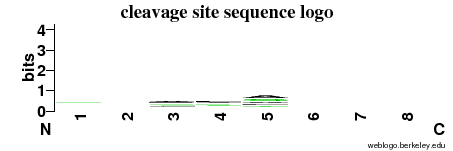$VAR1 = undef;
Summary for peptidase S08.001: subtilisin Carlsberg
| Names | |
|---|---|
| MEROPS Name | subtilisin Carlsberg |
| Other names | Alcalase Novo, kerA g.p. (Bacillus licheniformis), Ker BL (Bacillus licheniformis), Ker BP (Bacillus pumilus), keratinase (Bacillus sp.), subtilisin A, subtilisin JB1, subtilopeptidase A, thiolsubtilisin, Thrombovasim |
| Domain architecture |
|---|

| MEROPS Classification | |
|---|---|
| Classification | Clan SB >> Subclan (none) >> Family S8 >> Subfamily A >> S08.001 |
| Holotype | subtilisin Carlsberg (Bacillus licheniformis), Uniprot accession P00780 (peptidase unit: 106-379), MERNUM MER0000309 |
| History | Identifier created: Handbook of Proteolytic Enzymes (1998) Academic Press, London. |
| Activity | |||
|---|---|---|---|
| Catalytic type | Serine | ||
| Peplist | Included in the Peplist with identifier PL00342 | ||
| NC-IUBMB | Subclass 3.4 (Peptidases) >> Sub-subclass 3.4.21 (Serine endopeptidases) >> Peptidase 3.4.21.62 | ||
| Enzymology | BRENDA database | ||
| Biotechnology | Forms of subtilisin are widely used commercially. | ||
| Cleavage site specificity | Explanations of how to interpret the following cleavage site sequence logo and specificity matrix can be found here. | ||
| Cleavage pattern | -/-/-/- as/-/-/- (based on 43 cleavages) as/-/-/- (based on 43 cleavages) | ||
 |
| Specificity matrix | ||||||||||||||||||||||||||||||||||||||||||||||||||||||||||||||||||||||||||||||||||||||||||||||||||||||||||||||||||||||||||||||||||||||||||||||||||||||||||||||||||||||||||||||||||||||||||||||
|---|---|---|---|---|---|---|---|---|---|---|---|---|---|---|---|---|---|---|---|---|---|---|---|---|---|---|---|---|---|---|---|---|---|---|---|---|---|---|---|---|---|---|---|---|---|---|---|---|---|---|---|---|---|---|---|---|---|---|---|---|---|---|---|---|---|---|---|---|---|---|---|---|---|---|---|---|---|---|---|---|---|---|---|---|---|---|---|---|---|---|---|---|---|---|---|---|---|---|---|---|---|---|---|---|---|---|---|---|---|---|---|---|---|---|---|---|---|---|---|---|---|---|---|---|---|---|---|---|---|---|---|---|---|---|---|---|---|---|---|---|---|---|---|---|---|---|---|---|---|---|---|---|---|---|---|---|---|---|---|---|---|---|---|---|---|---|---|---|---|---|---|---|---|---|---|---|---|---|---|---|---|---|---|---|---|---|---|---|---|---|
|
| Specificity from combinatorial peptides | ||||||||||||||||||||||||||||||||||||||||
|---|---|---|---|---|---|---|---|---|---|---|---|---|---|---|---|---|---|---|---|---|---|---|---|---|---|---|---|---|---|---|---|---|---|---|---|---|---|---|---|---|
|
 xxxx
xxxx